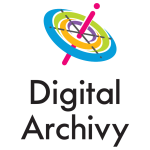”Content Is King and Storage Is Cheap”
We often hear “content is king” and “data storage is cheap.” But few will point out how difficult it is to identify and separate content from data. Content include Intellectual Property. But it also may include emails or text messages. Though content may be Top Dawg, long-term preservation is expensive. Formats, technical requirements and time frame affect storage costs and strategy. Yes, storage is cheap now, but over time, it becomes expensive and costs add up quickly.
Appraising data prior to ingest is invaluable. This builds trust in a system that users can use and find assets. Storage is cheaper than cheap when less data is stored.
Content Is King
Content lies in the Venn Diagram intersection sweet spot of People, Process and Technology. As a result, technology people, and process create content. Workflows can be well-defined if challenges are phased. Also, solutions must be multi-dimensional. The question becomes, how do creators and users find, access, and share the resources they need?
To some, it is unreasonably obtuse to invest in an organization’s organization. But many gradually will see that great value is added with a single unified system. One single source of truth may become a trusted digital repository. If costs are shared, and if it serves many users, an information infrastructure iscost-effective. Armed with content they need, users are empowered to seek, use, need, and share information.
Storage Is Cheap
Each network supports a wide network of extraordinary groups and unique individuals. While accessing information, users employ different processes and recognize their different needs and objectives. These include:
- Data for documentation of records
- Intellectual Property
- Sensitive or confidential data with PII
- Information licensed for limited usage
- Internal and external resources used for reference purposes
- Evidential and analytical data from reports and projects
- Communications
- Promotional and marketing materials
Information creates and adds value to the network. It frames every element of access, need, and use. An understanding of content usage also benefits users. An effective metadata schema will build a sound infrastructure. With guidance, a ttaxonomy can frame knowledge due to internal resources. Controlled vocabularies, preferred terms and acronyms, compiled from a style guide will fortify a trusted system and help with user adoption.
Consequently, we build effective and efficient information management systems. Institutions migrate structured and unstructured data to the Cloud. Sooner or later, they will need a strategy. Without a plan, they practically guarantee they will misunderstand their institutional knowledge.
Content is King, but context is queen and metadata is a prince.
Check out my experience from a list of clients with whom I’ve worked: http://www.digitalarchivy.com/clients/
Read MoreThe Story of Us (I = Information)
Most of what we learn about anything comes from outsiders and outside sources. Historians pore over archival primary sources and abandoned documents to examine how the dead truly lived. Memoirists and screenwriters, on the other hand, conjure up scenes from childhood to plot personal narratives of individuals. In both cases, information and archives are key to storytelling. Whether it’s fact-based or persuasive, resources can be used and interpreted to serve many needs.
Archives and Astrology
Archives are like astrology. Astrology is an interpretation.
It is layered onto a myth and then layered onto a logical system that is fully realized, but completely distinct, from the real world. Similarly, an archive is an interpretation layered onto an information architecture and content management system. Whether it has a fully realized taxonomy built from internal preferred terms or not, the system is a protects content and context.
Metadata schema standardizes data effectively. A trusted archival system provides a finding aid to assets that may be completely distinct, and then integrated within the real world.
Calculating I = Information
Information has many meanings as well. Some see it as an age and a commodity. Others like James Gleick are more precise and argued that it is A History, a Theory, a Flood. Gleick wrote an excellent and riveting book on it. Paired with Claude Shannon’s thesis, it’s perfect. Today information is everything. It also is a Cloud. In the age of cloud computing, information surrounds us virtually and in reality.
Information, however, is also an interpretation. Based on a theory of Borge Langefors, the Infological equation states that Information is a function of an interpretation of Data and Pre-Knowledge over time.
I love this equation. It clearly shows how Digital Archivy archivists can help improve your information. By focusing on the Data and the Knowledge of provenance (creators), functions, and objects, and then be establishing or defining the time frame, an institution will gain accurate and valuable information.
Based on knowledge of international standards and familiarity with functional requirements and best practice, it is possible to better interpret the resources in order to identify, protect and amplify the Information.
Applying Information Strategy
Developing a methodology or a tool to help with interpreting data is key. A strategy built upon three main resources will solve this problem:
- clearly identifying and defining data sets
- determining who owns and can share relevant pre-knowledge (provenance)
- tracking time restraints
There is an additional key element of this equation’s system. That is to identify clearly the algorithm used for interpretation. This may seem like a minor esoteric point, but in reality, this is the most important variable of all. Reasoned conclusions can be drawn if the data and pre-knowledge can be trusted Users can take control by sorting the search results by date, author, or title. The results may be the same, but the ordering and display of data may affect the content that is available.
Information is a flood and a cloud and much more. Data surrounded us at all times. Once you successfully identify the data sets and other elements, the component parts will work together to present the accurate information you need. If you need help managing or interpreting your information, please see our clients page.
Read More

